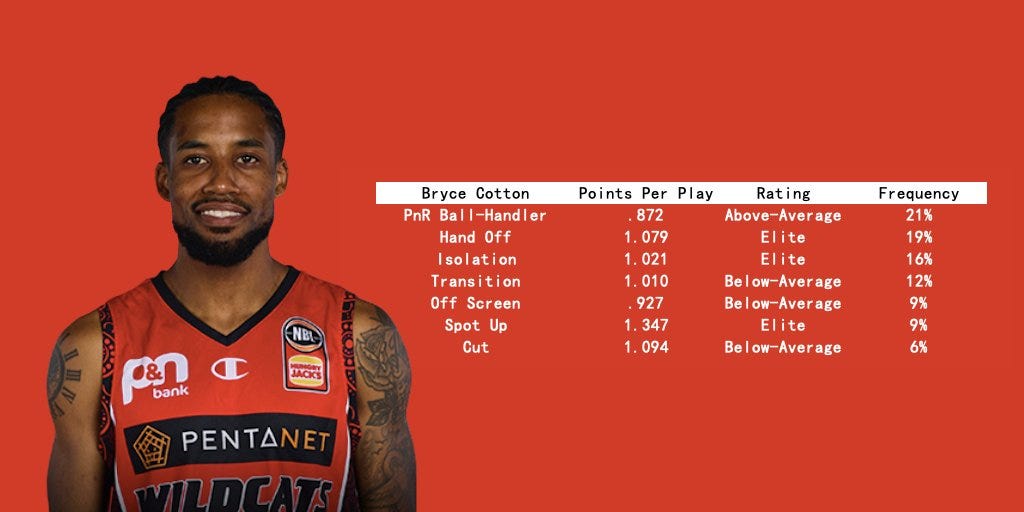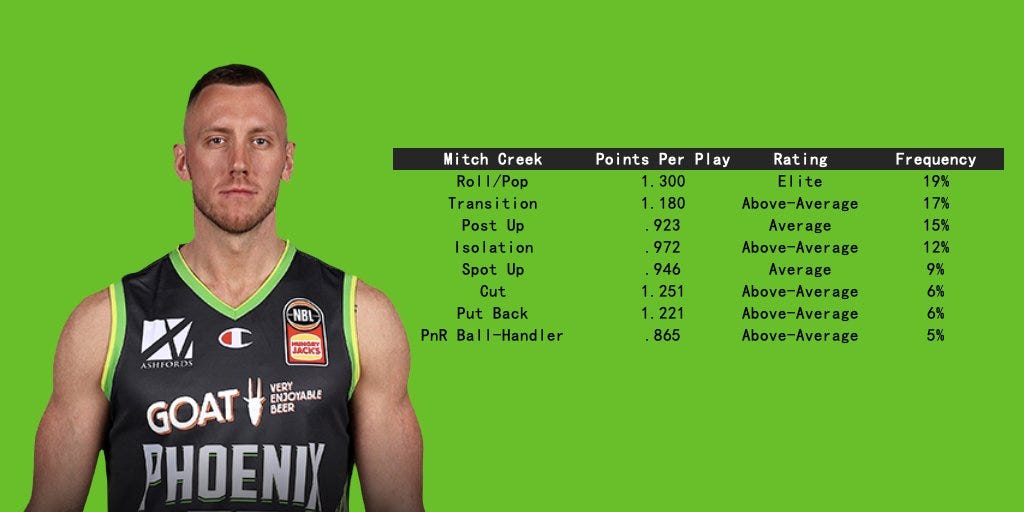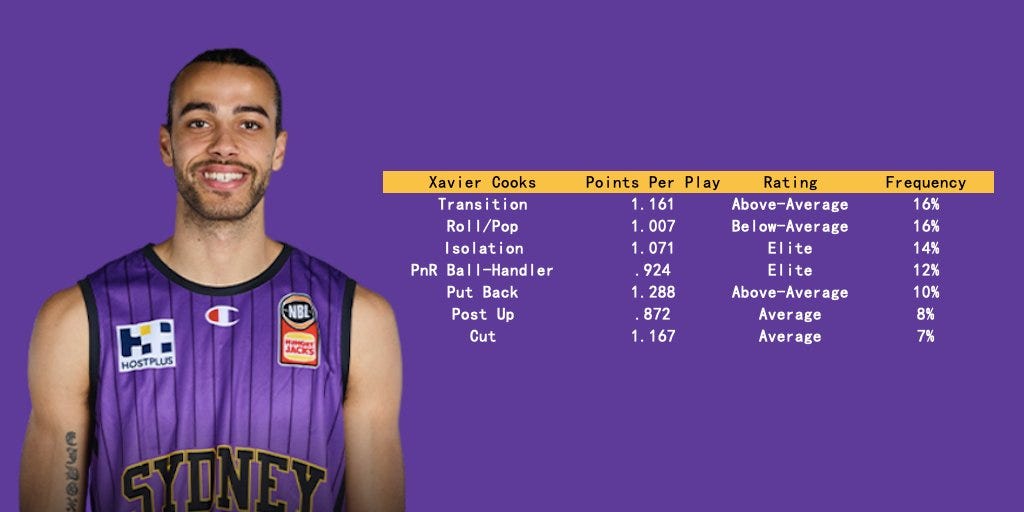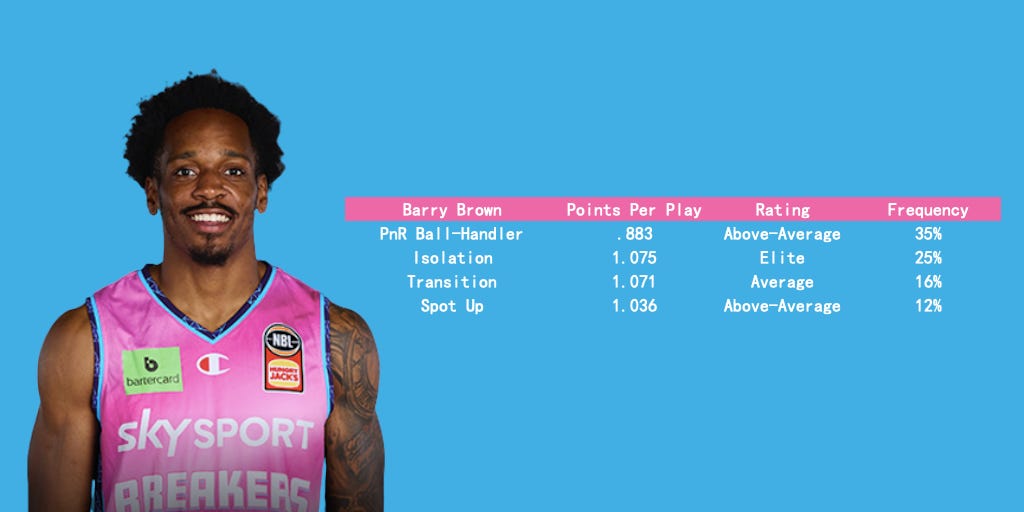NBL: Top 5 Offensive Players of the Year
Discussing the most impactful players on the offensive end of the floor over the course of the 2022-23 regular season.
Credit: JBC Studios
1. Bryce Cotton
Who else but Bryce? Nobody gets more opposition attention than him, yet he continues to maintain the high bar that he’s set for himself in the past.
Cotton would have to be close to the best conditioned player in the league, with his constant motor working through physicality off the ball or successful forays into the paint defying a player with such a small stature, and now into his thirties.

With the ball in hand, there’s nobody more frightening. He’s got the speed, herky-jerky dribble moves to get defenders off balance and create separation or draw countless jump shot shooting fouls.
Over the course of the regular season, Cotton ranked second in points per game out of isolation plays, scoring at an elite efficiency for that play type, and was also top ten in pick and roll scoring. Not just a scorer, Cotton is smart and reads the defence and the amount of defenders he has drawn to record 4.9 assists per game alongside the 23.7 points.
Off ball, it’s a constant task to track his whereabouts as he works off screens. He tests the communication and scheme of the opponents defence when working off ball to receive a hand-off (he ranked second in points per game on those), and he’s waiting for any slip up to back cut toward the hoop for a layup.
Perth’s half court offence has been the most efficient in the league on the back of Cotton’s skillset and aura, with the Wildcats scoring six points per 100 plays better than the third ranked team in that slower setting — dominant. In transition, Perth don’t run all that often relative to the rest of the league, but it is Cotton as well that is the lead threat.
Despite the work load and amount of eyes on him, he’s posted his highest true shooting percentage since the 2017/18 season. There are no signs of slowing down as he remains a surefire path to an elite team offence.
2. Mitch Creek
Having Creek at power forward is the next best path to a strong regular season offence, as we’ve seen each year in South East Melbourne. Even with multiple starter level teammates missing extensive time this season, the Phoenix scored at 117 points per 100 possessions with him on the floor per spatialjam.com.
Creek ranked number one in the league in PPP among high-volume players, whilst also averaging 2.9 assists and grabbing 2.1 offensive rebounds per game. His improved skillset and more calculated approach to half court scoring has paired with his transition prowess to create a consistent 20-points per game scorer.

In transition, Creek trailed only Antonius Cleveland in points per game, highlighting one element of his mismatch ability as he beat opposing bigs down the floor and used his positional ball-handling advantage.
When the defence was set, Creek was prolific as the screen setter, ranking first in points via a roll or pop situation, whilst he also bullied overmatched opponents in the one-on-one setting.
Credit: May Bailey Photography
I dove deep into Creek’s evolution as a scorer and what makes him so tough to defend in a piece earlier this year, which you can read here.
3. Derrick Walton
Probably the most poised player with the ball in hand in the league. Walton’s dribble package, change of pace, vision (perhaps the league’s best passer) and shooting ability was on show all season as he averaged 16.3 points and 6.3 assists.
Sydney ranked first in transition frequency, with Walton the number one scoring guard across the league in this setting. The Kings were also the only challengers for Perth in half court scoring efficiency.
Credit: May Bailey Photography
Walton finished as the number one player across the league in isolation scoring efficiency, whilst his decision making out of ball screen actions was excellent.

The above figures do not account for turnovers that were a result of playmaking for others, nor do they account for assists, so you can give those pick and roll numbers a bump up from average (good) to above average. As a scorer overall, Walton had a very healthy 59% true shooting percentage.
Walton played unselfish and within himself for parts of the regular season, but showed he can go to another level as a scorer if his team requires it.
Walton places higher than Xavier Cooks in these rankings, due to my belief that a guard is generally more important on offence than a big, as it is easier to play through them.
4. Xavier Cooks
The only player to feature in the top five of both my offensive and defensive rankings — fitting given the MVP result. At 16.2 points, 4.2 assists, and 1.9 offensive rebounds (21.7-5.7-2.6 per 36 minutes), Cooks showcased his uniqueness on offence every night, even with the Kings being able to massage his minutes as they cruised to the number one seed.
Sydney scored at a whopping 123 points per 100 possessions with Cooks on the floor this season, 4.4 points better than when he sat on the bench per spatialjam.com — one of the best differentials in the league.
Cooks’ time on the floor included about a fifth of his minutes at centre in some turbo-charged smaller lineups, often with bench personnel. Whether it was with the starters in his normal power forward slot, or with the smaller units, Cooks was a weapon igniting transition opportunities for himself or others.

As a half court scorer, Cooks can obviously catch and finish at the rim, but he’s also tough to handle in a one-on-one setting as a face up option, or attacking with space from the perimeter. He also scored at an average (good) level from the post with his spin move and athleticism tough to handle.
His lack of three-point shooting really doesn’t hinder him at all at the NBL level, with so many strengths in other areas and a roster that fits around him. The only meaningful hole in his game is his free-throw shooting (54%). Despite leaving some easy points out there, he still ranks as one of the most efficient high-volume scorers in the league.
Credit: May Bailey Photography
Cooks is the best passing big in the league, and can either handle the ball himself to initiate plays, or operate as the screener making plays out of the short roll. Either of these options, particularly the latter can serve as a scheme buster and make the Kings unguardable with the personnel they have available to put around him.
5. Barry Brown
When you look back on this season and think of self-created shots, Brown’s name will be the stand out. He may not have hit the efficiency marks of others, but this is where the context of his attempts is weighed up.
Credit: Cam McBride Photography
Brown ranked number one in points per game out of isolations, as well as in pick and roll ball-handler plays. Whilst Will McDowell-White could pick apart a defence with his playmaking for others, he isn’t yet there as a consistent scorer. Brown’s off the dribble shot-making was an excellent foil in the backcourt.

Brown topped the league in Offensive Box-Plus Minus, scoring 19.5 points per game with New Zealand piling on 118 points per 100 possessions in his minutes.
Much like Cotton, Brown was the leading transition threat for a team that didn’t push the pace all that much.
Brown has missed a chunk of time throughout the regular season and enters the playoffs under an injury cloud. The Breakers will need him healthy and at his shot-making best to be a legitimate title threat.
Honourable mentions
Milton Doyle could certainly be in the top five, depending on how much value you place on the context of Brown’s superior isolation and transition ability. Doyle is a smooth operator, and, like Walton and D.J. Hogg, who was also close to making this list, would be in the group first picked for the All-Poise Team.
Another guard worth mentioning is Chris Goulding, who was able to stave off Father Time and record the highest TS% of his career. Teammate Rayjon Tucker took longer than hoped to find the right level of comfort and understanding of his spots, but eventually reached a fringe All-NBL level. Tyler Harvey, Tyler Johnson, and McDowell-White had their positive points but also caveats that were too big to have them in serious consideration.
Alan Williams led the league in post-up scoring, showcasing a deep floater package out of pick and roll, as well as being a consistent presence at the rim — 3.3 offensive rebounds per game. He and Creek gave the Phoenix an identity when teammates were absent.
Other front court players worth a mention include Robert Franks, who was arguably held back a little too much by role clarity and shot selection of others. Then there was the improved Keanu Pinder, who was a mismatch nightmare — I wrote about Pinder’s development earlier in the season. Jack McVeigh now knows his scoring spots and game so well at this point that he makes it look incredibly easy on the regular.







